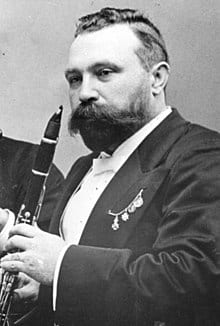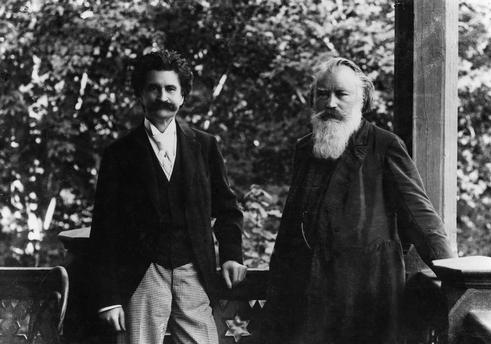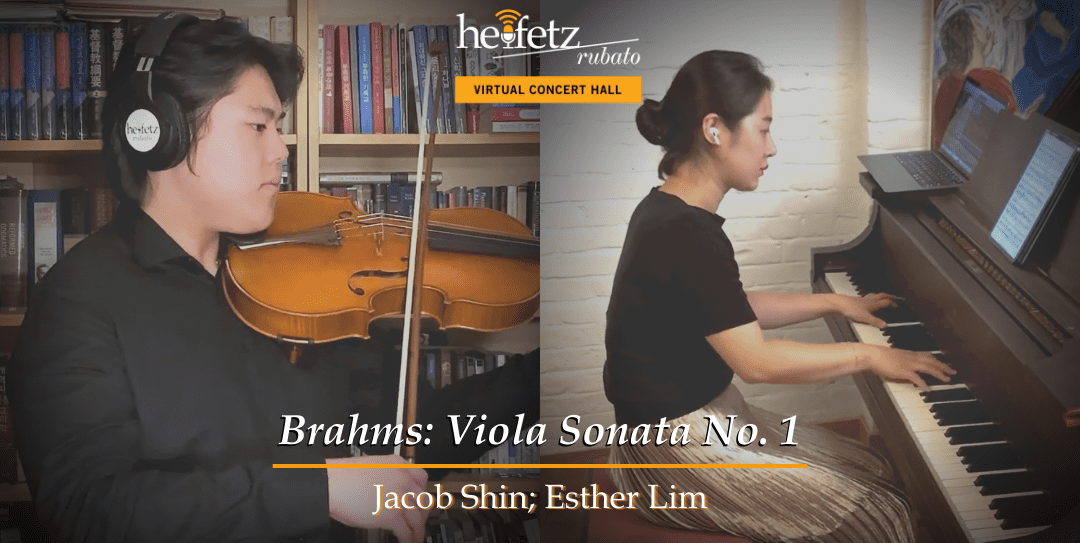Our Video of the Week features a mainstay of many a Heifetz Stars of Tomorrow program…no less true during our Virtual Summer of 2020 than in previous years: The Viola Sonata No. 1 in F minor, Op. 120 No. 1 by Johannes Brahms. Today, it’s a staple of the viola repertoire, though in fact it was the brilliance of a 19th-century clarinetist that spurred its creation.
After the successful premiere of his Op. 111 Second String Quintet in 1890, the 57-year-old Brahms decided it was time to put away his composing pen. He told a friend he had “achieved enough; here I had before me a carefree old age and could enjoy it in peace.” But a year later, Brahms changed his tune, He happened to travel to the provincial German city of Meiningen, Despite the fact that Meiningen has the same population of our Heifetz home of Staunton, VA, (about 25,000), it was home to one of the elite orchestras in all of Europe, headed up by the legendary conductor and Brahms buddy Hans von Bülow. And it also boasted – to Brahms’ utter astonishment – one of the very best clarinet players in the world. Richard Mühlfeld (or Fräulein Klarinette as Brahms would come to call him,) had initially joined the orchestra as a violinist but switched to clarinet within three years. His playing so inspired the composer that Brahms came out of his short-lived retirement to write two of this chamber-music masterpieces: The Clarinet Trio, Op. 114 and the Clarinet Quintet, Op. 115, both dedicated to and premiered by Mühlfeld himself.

German clarinetist Richard Mühlfeld (1856-1907). Brahms called him “the nightingale of the orchestra.”
The relationship continued to bear fruit, and in 1894 Brahms completed his two clarinet Sonatas of Op. 120 while at his his summer retreat in Bad Ischl, a spa town in Austria. These would be the last pieces of chamber music Brahms would write. and he accompanied Mühlfeld on piano at their public premiere in January 1895 in Vienna. Obviously proud of the inspiration he found from these works, Brahms subsequently created arrangements for both viola and violin as well. While the latter failed to gain much popularity, the versions for both clarinet and viola have become absolute staples of those instruments’ repertoires. Instead of making mere transcriptions though, Brahms added double stops and other nuances specifically to suit the range and timbre of the deeper-throated viola.
Today’s selection features the first movement, Allegro appassionato, of the first sonata. Performed here in a riveting virtual collaboration by #Heifet2020 student violist Jacob Shin (Fort Lee, NJ) and pianist Esther Lim (New York, NY) as part of a Stars of Tomorrow concert on Rubato: The Heifetz Virtual Concert Hall..


Johann Strauss and Johannes Brahms (r) in Bad Ischl


